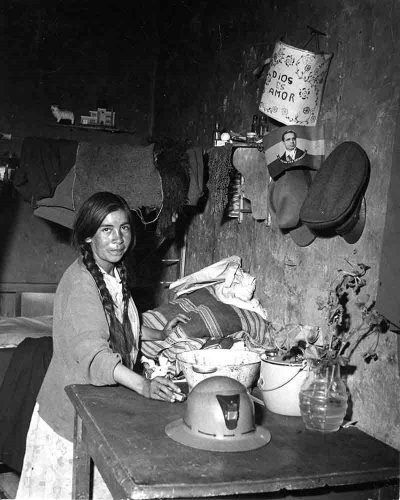In the movie Blondes Preferred Marilyn Monroe sings Diamonds Are a Girl's Best Friend.
At first glance, diamonds look inconspicuous. In India, they have been known and valued for thousands of years. It was not until around 1200 that they came to Europe via the trade route named Silk Road. Here, in the 14th century, the cutting of this extremely hard mineral was developed further and the desire for these stones grew explosively. Above all, craftsmen from the Netherlands make these pieces of jewelry sparkle in the most beautiful colors. The fire of diamonds..
For this reason alone, diamonds are highly sought after and fetch enormous prices, depending on the cut and degree of purity. Goldsmiths make exclusive and beautiful pieces of jewelry from them with precious metals.
Diamonds are also the hardest natural material. They are used in industrial production for drilling, grinding and cutting, among other things, and are almost impossible to replace.
But the sustainability of a product always begins with its extraction.
And the subsequent costs for the environment. These arise! Always! The downside of the trade in these coveted minerals is still today often intolerable working conditions and environmental destruction on a large scale.
Dried up wells and displaced inhabitants are some of the effects. You can experience an impression in this advertising film of a mining company. What remains is dead land.
Also wars and arms purchases were and are financed with diamonds, because they are easy to transport and are accepted as "means of payment" in exchange for weapons.
The promoters of this wealth often have nothing of the treasures they bring to light. Peter Bock-Schroeder makes this problem visible: He photographed miners and their families in Bolivia in 1954 and documented the meager conditions under which they had to live their lives. A life in huts, without windows and without a bed. Often they lived five or more to a room. And as late as 1961, the average life expectancy was 25 years. Infant mortality was 60%. Yes, things have improved since then.
But whether it's gold in Bolivia or diamonds in Africa: even today, working conditions are often inhumane. Moreover, the weakest in the chain, those who mine these raw materials, earn the least money. So products are never or only very rarely produced sustainably. But pointing the finger at the wealthy as consumers of luxury goods would be too easy. Let's think, for example, about the conditions of small farmers in the food industry or the seamstresses in the clothing industry. Sustainability starts with one's own diet and one's own closet.

Peter Bock-Schroeder: Hut of a miner family from Patino, Bolivia 1954 © Estate Bock-Schroeder
Botswana proves that the wealth of a country can also be used in a completely different way.
Seretse Khama, a wise and responsible sovereign, is responsible for this. In 1966, he led his country out of its dependence on the empire and into a prosperous democracy. An exceptional state in Africa with high social benefits, with free education for all children and with a comprehensive health care system for all citizens. Botswana's prosperity can be traced back to diamonds, which Seretse Khama had to secure for his country from the British in 1966.
Formed under extreme pressure at great depths, diamonds have one thing in common with coal: they are made of carbon. This gave British entrepreneurs an exciting idea.
After all, if combustion processes already produce CO², and if we have to retrieve it from the air as part of decarbonization, why not just make diamonds out of it?
The power source for this is sustainably generated energy.
Take carbon dioxide from the atmosphere, rainwater, and wind and solar energy. And in two weeks, diamonds are created. A great innovative idea at a time when the climate crisis alone makes it clear that we have to do without some things, value some things differently and do some things differently.
A company shows us a way with ingenuity and innovative spirit so that we can continue to use something beautiful full of joy. In this case, this supports UNO point 12 "Sustainable products and sustainable consumption" in a wonderful way. The air becomes cleaner, the climate better, and the gemstones on fingers and necks are guaranteed to have been made with sustainability conditions in mind. But we have to ask for it when we shop!
Then you can casually express at the next party that you wear diamonds basically only for ecological reasons. So "actually" to save the climate.

Douglas Kirkland: One Night with Marilyn, 1961 © Kirkland Douglas
Photographers often put up with a lot to get such wonderful shots. Like Kirkland Douglas here. For these photos of Marilyn Monroe in her bed, he hung himself and his equipment at a lofty height in the hard metal frame of the open-air staircase.

Douglas Kirkland, Marilyn Monroe, 1961 © Douglas Kirkland
The photographer first learned the craft of developing and making finished images. But never to take pictures. So he began to travel with the camera. He chronicled his travels through Sweden, England and Belgium. "Travel is the best training for a photographer," he wrote. "During those years of travel, I could experiment and shoot as I pleased. I had time, there was no 'must' and it was no problem to earn my living. I was married to my camera. "
In addition, his travels to North and South America, through Europe and to the Middle East resulted in touching and impressive photographs such as the portraits of miners and their families in Bolivia. Peter Bock-Schroeder is one of the still little known and yet great photographers of the 20th century. His love for people and landscapes and a very special point of view accompanied his entire professional life.
Douglas Kirkland began working as a staff photographer for LOOK MAGAZINin 1961, he was commissioned to shoot a photo series with Marilyn Monroe for the cover of the 25th anniversary issue of the coveted glossy magazine. This "Night with Marilyn" photo series made the still young photographer instantly world famous.
The "Who's Who" of notable personalities posed for Kirkland, as did outstanding photographers like Man Ray or Jacques Henri Lartigue to scientists like Stephen Hawking. Among the celebrities he has photographed are Mick Jagger, Sting, Björk, Arnold Schwarzenegger, Morgan Freeman, Orson.